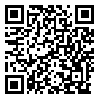Volume 14, Issue 9 (December 2016)
Nursing and Midwifery Journal 2016, 14(9): 748-756 |
Back to browse issues page
Download citation:
BibTeX | RIS | EndNote | Medlars | ProCite | Reference Manager | RefWorks
Send citation to:



BibTeX | RIS | EndNote | Medlars | ProCite | Reference Manager | RefWorks
Send citation to:
ahangarzadeh S, rasoli M, sori H, bakhtiari M. TRANSLATION AND PSYCHOMETRICS OF THE PERSIAN VERSION OF THE “UNCERTAINTY SCALE FOR KIDS” IN ADOLESCENTS WITH CANCER. Nursing and Midwifery Journal 2016; 14 (9) :748-756
URL: http://unmf.umsu.ac.ir/article-1-2003-en.html
URL: http://unmf.umsu.ac.ir/article-1-2003-en.html
1- Shahid Beheshti University of Medical Sciences, International Branch, Tehran, Iran
2- Department of Pediatrics Nursing, School of Nursing and Midwifery, Shahid Beheshti University of Medical Sciences, Tehran, Iran (Corresponding Author)
3- Department of Epidemiology, Faculty of Shahid Beheshti University of Medical Sciences, Tehran, Iran
4- Department of Clinical Psychology, Taleghani Hospital, Shahid Beheshti University of Medical Sciences, Tehran, Iran
2- Department of Pediatrics Nursing, School of Nursing and Midwifery, Shahid Beheshti University of Medical Sciences, Tehran, Iran (Corresponding Author)
3- Department of Epidemiology, Faculty of Shahid Beheshti University of Medical Sciences, Tehran, Iran
4- Department of Clinical Psychology, Taleghani Hospital, Shahid Beheshti University of Medical Sciences, Tehran, Iran
Abstract: (7047 Views)
Background & Aims: Uncertainty in illness, as a psychological stressor in adolescents with cancer, is a challengeable factor in the care of the children. In order to measure the effectiveness of interventions on reducing uncertainty, there is a vital need for a valid and reliable instrument. This study was conducted to translate and localize the Persian version of the “Uncertainty Scale for Kids”, and to examine its psychometric properties in Iranian adolescents with cancer.
Materials & Methods: The Persian version of the “Uncertainty Scale for Kids” (USK) was validated based on the model proposed by Wild et al. (2005). The mentioned scale was translated into Persian and back-translated into English, and revised by the scale designer. Two-hundred adolescents with cancer were enrolled who attended clinics and oncology wards in Children's Medical Center of Tehran, clinics and oncology wards in hospitals of Urmia (North West of Iran), Children's Medical Center of Tabriz (North West of Iran), and the Cancer Research Center of Isfahan (Center of Iran).Then, content and face validity assessments, construct validity and internal consistency, and reliability of test-retest were conducted for the Persian version. Data were analyzed by SPSS version 20, and AMOS version 21 as well.
Results: Confirmatory factor analysis of the 22-items “Uncertainty Scale for Kids” demonstrated less than adequate fit with three subscales, and ultimately the scale fit was improved by removing one item (No. 18 “I don’t know why (of all people) I got cancer"), and by displacing of another item (No. 17 “I don’t know if I’ll be better or not”).
Internal consistency reliability was obtained for the “Uncertainty Scale for Kids” (α=0.76) and for each of the subscales including ignorance, and lack of knowledge (uncertainty) (α=0.72), the inability to predict (α=0.75), and uncertainty about the meaning of events (α=0.73). In addition, the results of the calculating Pearson's correlation coefficient was calculated between two tests r=0.77 (p
| Rights and permissions | |
 |
This work is licensed under a Creative Commons Attribution-NonCommercial 4.0 International License. |





 gmail.com, unmf
gmail.com, unmf